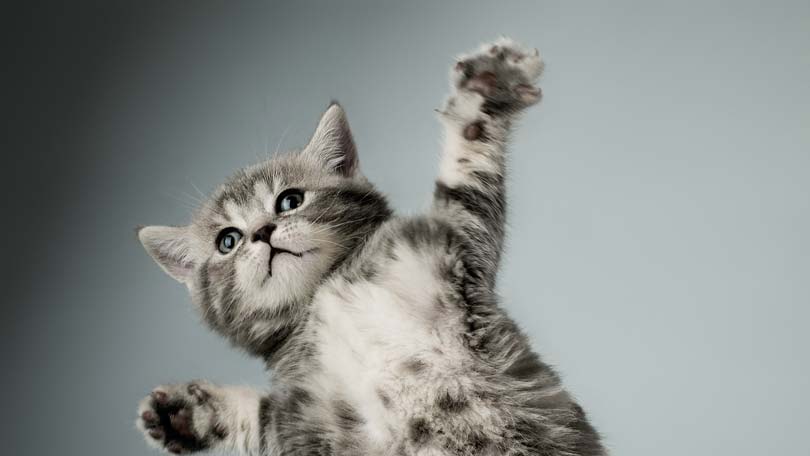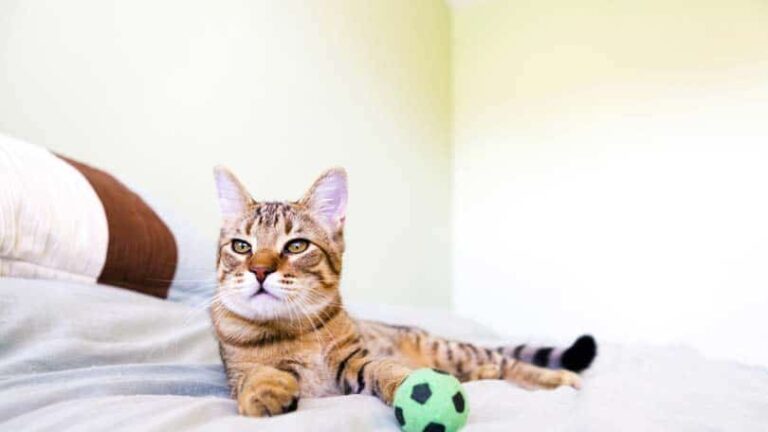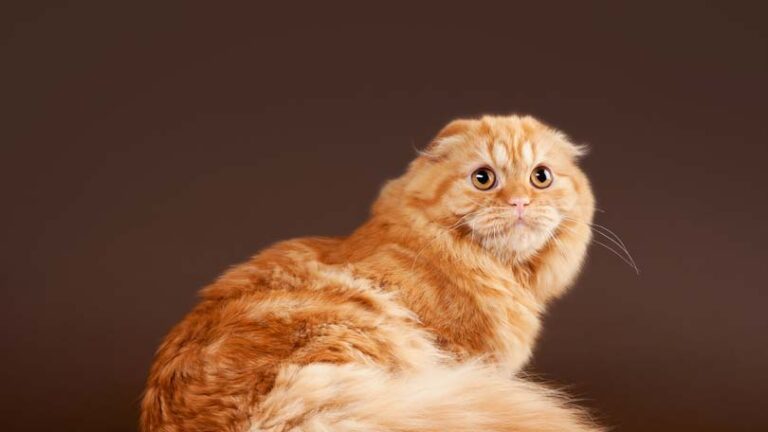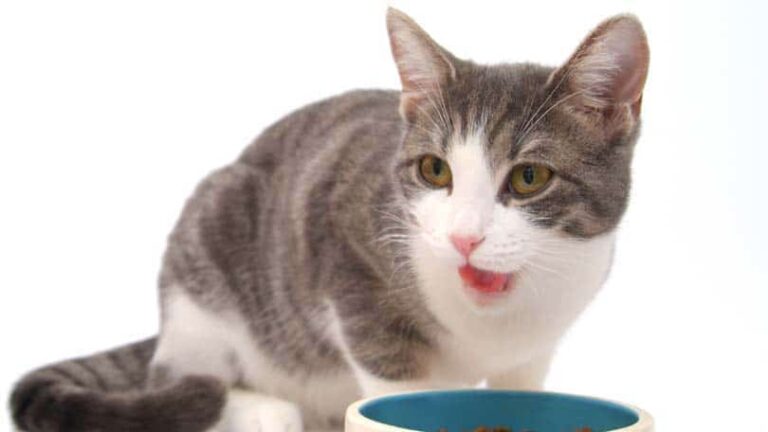Cat Trivia – Top 100 Facts
- To determine the size of the space and whether it is too small, cats use their whiskers to act as feelers of the area. They can determine if they will be able to fit or not.
- If you put cat urine under a black light, it will glow. This is a great way to find cat urine stains on your carpet if they are not readily visible.
- A cat does not have any sweat glands on its body. They do have sweat glands on their paws; however these sweat glands are not large enough to cool the entire body which leads cats to often avoid extremely hot environments.
- Cats are notorious for grooming themselves. They will spend about 30% of their entire life doing this. They will also spend 50% of their time in a light sleep, another 15% in deep sleep. This only leaves about 5% of their lives for play!
- The ears of a cat pivot up to 180 degrees and hear very high pitched sounds up to 65 kHz. This is three times higher than the human coming in at 20 kHz. Cats are at the top of the list when it comes to hearing rates.
- There is a correlation between white cats and blue eyes. Most white cats that have blue eyes are deaf. In the event of the white cat only having one blue eye, the cat is deaf in the ear that is closest to the blue eye.
- Abraham Lincoln was the first President to have a cat in the White House. His cat was named Tabby and was soon followed by 3 more cats Abraham Lincoln brought to the White House.
- Not all people love cats; in fact, some people fear them. This is called Ailurophobia. Notable people in history that suffered from Ailurophobia are: Napoleon, Charles XI, Henry II and Julius Caesar.
- Cats can have freckles too! They can be anywhere on their skin, mouth, etc.
- Cats are very agile animals. This is because they have about 290 bones and use over 500 of their 517 independent muscles to do things like jump, leap and sprint.
- A cat can jump up to seven times its own height.
- Cats can smell from two places. They can smell through their nose and also through their Jacobson’s organ, which is located in the upper part of its mouth.
- Cats do not walk on the pads of their feet. Instead, they walk on their claws.
- When it comes to vocal sounds, a cat beats out the dog’s 10 with more than one hundred. Their purring rate is an astounding 26 cycles per second which can be compared to a diesel engine idling.
- Cats cannot produce their own fat in their bodies. This is why it is very important to have cat food that contains fat.
- A cat’s nose is like its fingerprint. No two cat’s noses are the same. They have their own unique pattern.
- Sir Isaac Newton not only discovered the law of gravity, he also invented the cat door!
- Why does a cat land on their feet? The process a cat undergoes when falling begins with the rotation of the head, followed by the twisting of the spine. Once that is accomplished, the back legs align and get in position while the cat arches their back. The arching of the back lessens the impact.
- Cats only see the colors purple, blue, green and yellow range. This in contrary to the popular belief that cats are color blind.
- Cats are more of a nocturnal animal. They will become more active at night as well as see a vision increase. Cats only need one sixth of the light that humans require. This is one of the reasons they can see better at night.
- You can tell your cat is overweight when you cannot feel the ribs when you pick the cat up.
- Cats give love bites. This can happen when you are petting them, rubbing their stomach, etc. These love bites are not done out of anger; that is their way of telling you they are enjoying the attention.
- Cat Finances: It will cost about $7,000.00 to support your cat’s necessities over their lifetime. Expect to pay about another $80-$100 in veterinarian bills each year. This works out to be about $472 a year (considering the lifespan of 15 years).
- Get rid of cat hair by spraying anti-static spray on the area, wait roughly one minute then easily remove it with a brush that is six inches. This can be done on virtually any surface.
- Cats and Humans are linked with emotion. Not only does a cat have a similar brain to a human, they also have the same region in the brain for emotional response.
- Proailurus is the first known cat and existed more than twelve million years ago.
- Cats have to have a specific gene that allows them to enjoy cat nip. About 20% of all cats do not have this gene.
- Petting a cat can lower a human’s blood pressure. This is why many people take cats to places like nursing homes and hospitals.
- During World War I, cats were used in the trenches to kill mice.
- In the Bible, there are many domestic animals listed; the cat is not one of them.
- Cats that have short hair tend to be leaner and more active, whereas cats with longer hair tend to be less active and heavier.
- A cat can actually get sunburn. Cats that lack hair in certain areas, or have minimal coverage while out in the sun for long periods of time run a high risk of getting sunburn.
- A cat cannot taste sweet things. This is due to the lack of a sweet receptor gene in the makeup of the cat.
- On a cats back, there are roughly 60,000 hairs per square inch. On the underside of the cat, there are double those amounts per square inch!
- A cat responds the best with words ending in the long “e” sound. An example of this would be “sandy”.
- When a male cat is neutered , it improves his life all around. He will see a longer life, less aggressive and tempted to fight with other cats, and will almost always stop spraying.
- A cat calms down when you cover its face; you can do this by placing your hands over the forehead and eyes, or, allow your cat to bury their face into something.
- A cat will generally not respond as well to a male as they do a female. This is due in large part to the frequency of their voice.
- Cat allergies are not seen with every cat. If a person is allergic to one particular cat, they may not be allergic to another. There is no real way to pinpoint which cats cause allergic reactions in certain people.
- If a cat brings you a dead rodent such as a mouse or another oddity such as a frog or lizard, they are giving you a present. This shows your cat loves you, although you might be a little shocked.
- Put a tiny bit of vegetable oil in your cats dry food in order to make their coat shine and help with pesky hair balls.
- It is true that a cat likes when you speak to him or her. It is just the same that if you stop talking to your cat, they will lose interest in communicating with you as well.
- In ancient Egypt, they highly regarded cats. This is seen by the Egyptians mummifying the cat as well as mice to go with the cat.
- Phoenician ships brought the first domesticated cats to Europe in 900BC. The Pilgrims were the first to bring the domesticated cat to North America.
- Edward Lowe, although using it for a different purpose initially, invented cat litter in 1947. It was first used to clean up grease spills.
- In as little as two weeks, depending on the cat and their cooperation, they can be trained to use the toilet instead of a litter box. This not only saves money for litter but also time from cleaning the litter box .
- The domestic cat has roughly 100 different and very distinct breeds.
- A cat’s recollection time is about 16 hours. This is compared to a dog’s 5 minutes. With this fact, cats are highly trainable in reasonable amounts of time.
- Cats actually solve problems and form conclusions. If a cat wants something, they will get it. This stubbornness and curiosity is a form of intelligence that cats have.
- A cat can absorb chemicals though their paws. This means you should not allow your cat to walk on any surfaces that have just been cleaned and are still wet, puddles of chemicals, etc.
- Taurine helps prevent blindness in cats. Make sure that the food you are feeding your cat has this ingredient in it.
- Cats can get E-coli too! This can be the result of undercooked or raw meat, and eggs that have not been cooked.
- Your cat can end up with gum disease or cavities. This is why it is best to take your cat to the vet for a cleaning or a cat dentist once a year.
- Cats can contract canine heart worms. This is a very rare occurrence, but does happen.
- A Siamese cat has “points” of color that are darker than the rest of the light coat. These points are created in the cooler areas of their body. Being the gene is heat related, the face is the number one area you will see the darker coloration.
- The Sphynx is a hairless cat that has the personality of a monkey, child, dog and cat! It is very lively and has been around for roughly ninety years.
- Cats have many taste buds. Areas, known as papilla cover the front, back, sides and throat of a cat. Each one of these papilla can contain anywhere from a dozen to thousands of taste buds. This is in comparison to a dog with roughly 2,000 on its tongue altogether.
- A cats tongue is rough because the papillae in their mouth face backwards. This is a design that allows cats to groom themselves, where their tongue acts like a comb as well as lick the meat off bones, etc.
- A Cat that has just given birth consumes their kitten’s bodily waste until they start on solid food. The mother cat does this to eliminate any trace of odors that a predator might pick up on.
- Unlike dogs, cats do not usually look to please their owners when learning new tricks and habits. For instance, when you train your cat, you will have to use positive reinforcement.
- Out of all the cat species, the domestic cat is the only one that can have it tail stand straight up when walking. All other cats cannot do this.
- Most of the time you will never be able to tell a cat is sick unless you pay attention closely to habits such as eating, drinking, etc. Unless a cat is physically sick, many terminal illnesses go unnoticed for years in cats.
- Diabetes can happen in cats. This disease will usually be present after the cat turns seven. First signs of diabetes will be increased eating, drinking and urination along with weight loss.
- A domesticated cat that lives outside has a lifespan of about three years compared to the normal life span of 16 years.
- One of the best ways to get up a urine stain is to spray some regular carpet cleaner on the area and then let club soda set on it for roughly 15 minutes. Blot it up and the stain is gone!
- The coloring on cats is based from red and black. Each cat will have a variation of one or both of these colors. The only exception is when you have a gene that masks the color. This produces a white cat, or spotty cats.
- Most calico cats are female and most red cats are male. This is due to the gene combination. Although the reverse is not impossible, it is extremely uncommon.
- A cat’s fur picks up static when it is cold or dry out. This usually happens in the winter months. When you pet them, the static is released. You can help eliminate this by rubbing a dryer sheet on their fur.
- A cats purring does not always indicate that a cat is content. In some instances it can indicate that the cat is in pain. Some studies have suggested that this purring can reduce the pain experienced by the cat and that it may even help repair the damage.
- The average sprinting speed for a common domesticated cat is around 31 miles per hour. In contrast, most dogs run around 15-25 miles per hour with the exception of a few dogs which are specifically bred for high speed running.
- Cats are known for having an extremely short gestation period while pregnant. The average time from inception to delivery for a cat ranges from 58 days to 65 days.
- Cats are known for having loose skin. This loose skin provides cats with an advantage in a fight, especially against other cats, because it allows them to maneuver around even when they are gripped.
- The liver of a cat is less effective at detoxifying than virtually any other animal on the planet. This means that cats are extremely sensitive to poisons and other chemicals, even ones which are kept around the house. For this reason steps must be taken to prevent the cat from being exposed to such chemicals.
- Cats groom themselves so regularly because it helps to keep their scent down. In fact, the saliva excreted during grooming acts as a natural deodorant. This reduction in smell is to help to prevent prey from smelling them while they are hunting.
- Cats are known for periodically delivering small animals to their owners. There are theories on this behavior but the true explanation is unknown. One common theory is that the cat has adopted the human into their social structure and is sharing excess food.
- Cats usually average between three and five kittens with each litter. In most cases the first litter that a cat has is smaller than all litters following.
- Cats have difficulty maintaining their body temperature of 102F when they are in water. This is believed to be the reason that most cats avoid water.
- To date, the earliest human and feline association is believed to have occurred around 9500 years ago.
- As a result of the size of their eye and the curvature of their retina, cats have a better range of vision than humans. The average cat has a range of about 285 degrees. In fact, the only area that cats cannot see is behind them.
- The domestic cat, or house cat, is the only species of cat in the world that is capable of walking while holding its tail vertically. Most cats hold their tail horizontally while walking.
- The meow sound that most people attribute to cats is almost always reserved for humans. It is extremely rare for one cat to meow at another cat.
- Cats commonly make their hair stand up to intimidate potential predators by making themselves look larger than they are. This is done using what are known as erector muscles.
- Unlike many other animals, including most predatory animals, cats are true hunters by instinct. In fact, cats will hunt and kill pray even if they are not hungry.
- Cats are all born deaf and with their eyes closed. Their hearing begins to develop at around 5 to 10 days following birth. Full sight is not achieved for around 3 months.
- The superstitions surrounding black cats were actually created in the United States. In large parts of Europe and Asia a black cat is considered a sign of luck.
- Cats are one of only a few species on the planet that typically walk with both the front and back legs on each side of their body at the same time. This means that they walk with the left front and back, then the right front and back leg in sink.
- Cat’s eyes are the largest eyes on any mammal in relation to their actual body size.
- Cats will only roll over and expose their stomach if they feel entirely safe in their environment. This action is an extremely good sign that your cat is comfortable with you and his or her environment.
- Cats will frequently roll onto their back when fighting. This is done to allow them to use both their front and back legs.
- Typically a cat will have a total of 5 toes on their front paws and their back paws will only have 4.
- Cats have an extra claw on their front legs which is usually approximately 1 to 2 inches above their paw. This claw is used for the purpose of restraining their pray when they are about to kill it.
- The cat brain is the closest animal brain to the human brain. It is for this reason that cat brains are used to gain a stronger understanding of the human brain.
- Cats are known for having one of the fastest breathing speeds of any mammal on the planet. They will typically take between 20 and 40 breaths each minute.
- The heart rate of a cat is more than double that of a typical human. At a standstill they will range between 140BPM and 160BMP with an excited range of between 210bBPM and 240BPM.
- The number of bones in a cat’s body varies, unlike a human, but in nearly all cats the tail accounts for around 10% of the bones. This high skeletal concentration in the tail is related to the use of the tail for balancing.
- Cat’s bodies concentrate the urine to prevent fluid loss when urinating. A cat looses as little as 10% of what a human does when it urinates.
- Cats only have around 30 teeth, in comparison to dogs which average 42. Like most mammals the number of teeth each individual cat has varies to some degrees
- Most cats have around 30 more vertebra than a human, despite their significantly smaller size. This plays a huge role in the flexibility of their back.
- The cat jaw is very limited in motion. Unlike dogs or humans their jaw is only able to move up and down.
- The eye color of kittens changes as they grow older. In almost all cases the eyes of a kitten are blue.

Having discovered a fondness for insects while pursuing her degree in Biology, Randi Jones was quite bugged to know that people usually dismissed these little creatures as “creepy-crawlies”.







